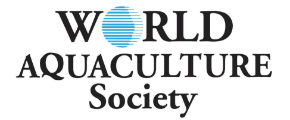intensive white shrimp Litopenaeus vannamei CULTURE in eco-based Recirculation system
The white shrimp (L. vannamei) has become a common culture species in Asia and Latin America. Outbreak of several diseases including white feces and acute hepatopancreatic necrosis syndrome (AHPNS) has caused huge economic losses in many countries. A lot of efforts have been made on developing different farming systems to prevent the outbreak of those diseases. In this presentation, we will summarize the results of a trial on recirculation system which established for intensive aquaculture of white. This trial was conducted at NEOVIA AQUACULTURE RESEARCH CENTER, Nha Be district, Ho Chi Minh City, Vietnam. The system consisted of two circular tanks with a volume of 100 cubic meter each. Brackish water was recirculated from a sedimentation pond with tilapia at a stocking density of 1 fish/m2. Shrimps at initial averaged live weight of 5 g from a nursery tank were stocked at a stocking density of 110 shrimps/m3. Shrimps were fed with commercial feeds for 70 days. Averaged live weight of shrimps at the harvest was 30.3 g per shrimps (33 shrimps/kg) and average daily weight gain was 0.36 g/shrimp/day. Survival rate was 93.9%. Total biomass was 3.1 kg/m3 (equal to 31 tons/ha/cycle). The present results indicate that it is possible to apply RAS for intensive white shrimp aquaculture with an estimated production of 31 tons/ha/cycle. In the next trial, higher stocking density will be evaluated.










